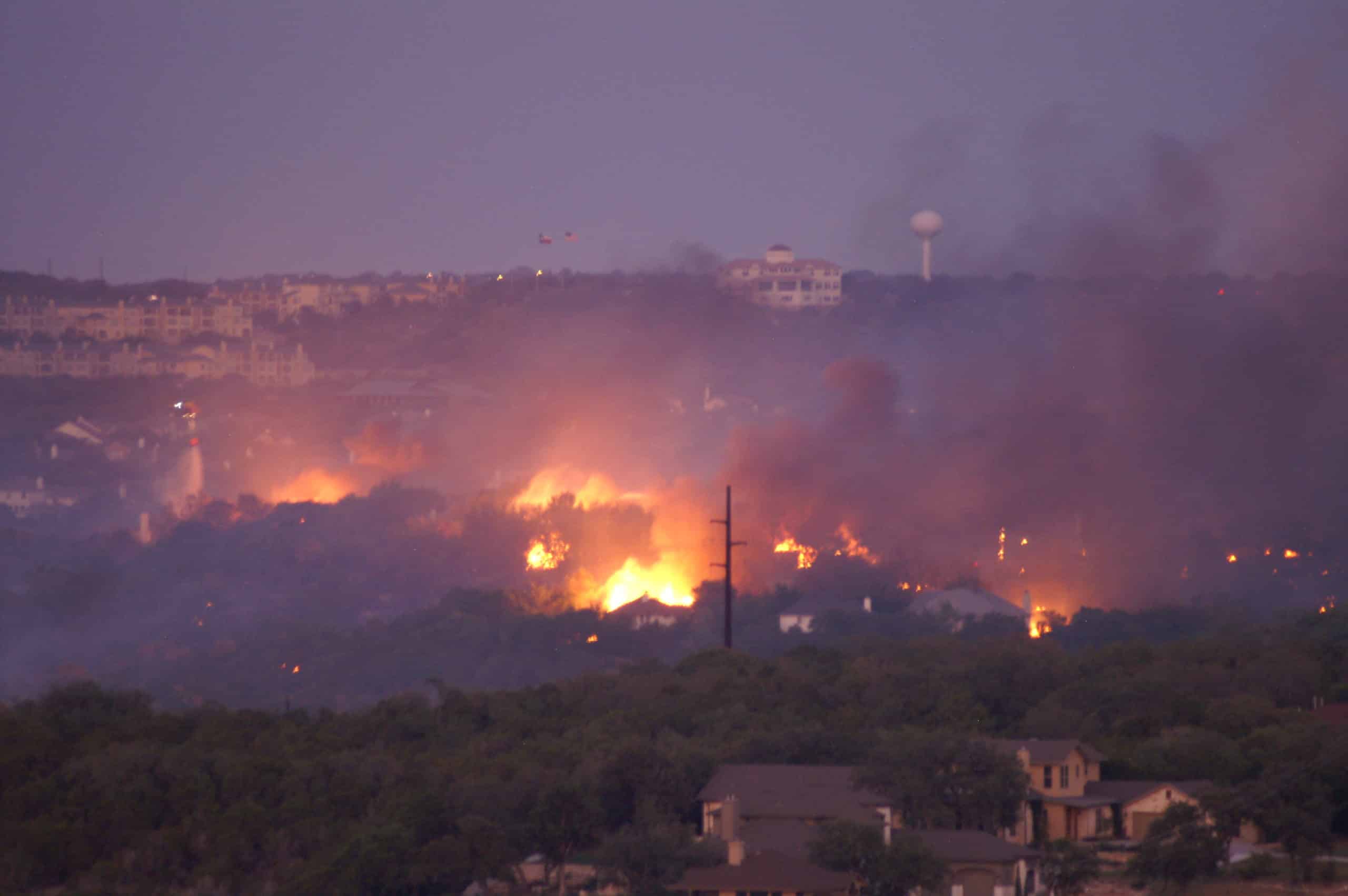LTFR Wildfire Readiness Program

“Not if, but when” is a common stance held by those involved in fire and rescue. Community Impact newspaper recently published an article stating: “The Austin Metro is the only area not in California to rank in the top five most wildfire vulnerable metropolitan areas in the country.” The statement came from a report published in September by data analytics company Core Logics. Thankfully, wildfires have been a rare occurrence in Lakeway, but with the long, hot summers, any dry vegetation can quickly act as kindling for the smallest spark. Lake Travis Fire Rescue (LTFR) invites local residents to sign up for the free Home Ignition Zone Assessments as part of their Wildfire Readiness Program which, they hope, will help minimize the impact of a wildfire when (not if) one occurs.

As with any neighborhood where homes are in close proximity, a fire at one property can quickly spread to other homes. Assessing and mitigating issues with your home’s vulnerability to wildfires may not just save your property, but your neighbors’ as well.
In 2011, when Texas was in the midst of the most severe single-year drought since the 1950s, several wildfires broke out close to home. The Steiner Ranch fire encompassed approximately 160 acres; 23 homes were destroyed and 1,000 homes were evacuated. In Bastrop County, a wildfire extended to approximately 34,000 acres during which 1,600 homes were destroyed and four lives were taken. It is now recognized as the most destructive fire in Texas history with a cost of $325 million in insured property damage.
As a result of these historic wildland fires of 2011, LTFR initiated a pilot program to strategically mitigate the threat of fires breaking out in residential areas during future dry seasons. The Fuels Management Program was started in early 2012 to treat targeted areas of LTFR’s district by reducing the wildland fire threat through a prescription of fuel mitigation. Following US Fish and Wildlife best management practices, they remove all branches to a height of 6-feet (referred to as “ladder fuel”) and cut away vegetation 4-inches or less in diameter at “breast height” in areas of dense vegetation near residential communities, such as greenbelts.
However, as Smokey the Bear reminds us, “Only You Can Prevent Wildfires.” As with any neighborhood where homes are in close proximity, a fire at one property can quickly spread to other homes. Assessing and mitigating issues with your home’s vulnerability to wildfires may not just save your property, but your neighbors’ as well.
The ignition of a wildfire can come from a number of factors including a lightning strike, an outdoor firepit, or a misplaced cigarette butt, not to mention intentional arson. According to ready.gov, an official website of the Department of Homeland Security aimed towards helping families plan ahead for disasters, a fire can become life threatening in just two minutes; in five minutes, a home can be engulfed in flames.

In 2018, LTFR hired Chris Rea, Wildfire Mitigation Specialist, to initiate the Wildfire Readiness Program for residents in the Lake Travis area. At an LTFR Citizen Education Forum meeting this past summer, of which LMUD’s Public Information Liaison Stephanie Threinen is a member, Rea said, “My objective is to educate homeowners in our community about wildfire and empower them to take action to prepare for the worst.”
According to the Firewise home preparation tactics, on which LTFR’s assessment plan is based, there are three ignition zones residents need to be aware of around their home:
- Immediate Zone: 0 to 5 feet around the home.
- Intermediate Zone: 5 to 30 feet around the home.
- Extended Zone: 30 to 100 feet around the home.
The first 30 feet from your home in all directions is called your “defensible space.” The landscaping used here can either discourage or fuel a wildfire. LTFR’s assessment discourages plants in this area that:
- generate ground litter from bark, leaves, or seeds that slough off
- have (very low moisture content) dead material within the plant
- have small branches and needles that can easily ignite
- have a high resin or volatiles content
“The first few feet from the house foundation are very critical. In Lakeway, the standard is landscaped beds around the home, filled with groupings of plants often surrounded by a bed of mulch. To make this area more fire-resistant, “I encourage residents to provide adequate space between plants and replace mulch with rock or stone,” Rea said.

The areas assessed during LTFR’s free Home Ignition Zone Assessment include:
- Roof covering
- Vents
- Gutters
- Eaves
- Windows
- Siding
- Defensible Space
- Trees
- Liquefied Petroleum (lP) tanks
- Decks
- Fences
- Yard Structures
After the home assessment, residents who implement LTFR’s suggestions become eligible to receive a Wildfire Ready Certification which includes a yard sign designation. You can schedule a free assessment by contacting Chris Rea directly at 512-645-5840 or wildfire@ltfr.org. HOAs can also contact Rea to schedule a Wildfire Ready presentation.
Visit the LMUD office for more information or to pick up your free copies of home and landscaping assessment self-guides, courtesy of LTFR’s Wildfire Readiness Program team.

 You are now being redirected to the WaterSmart page.
You are now being redirected to the WaterSmart page.